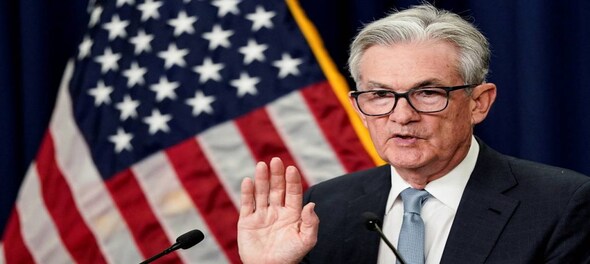
The broad consensus on Wall Street, and the rest of the world’s equity markets, is that Jerome Powell may hike interest rates by 50 basis points (100 basis point make a percent) on December 14, at the end of the two-day monetary policy review by the US Federal Reserve. The element of surprise is likely to be in what he says about inflation more than what he does with interest rates.
Inflation occurs when there is excess money chasing fewer goods and services, pushing up prices for the consumers. A central bank controls only one half of this equation and, therefore, it may choose to reduce the money supply to bring down inflation. A fall in money supply automatically affects economic growth (as borrowing costs go up for firms) and equity markets don’t like it.
For instance, benchmark equity index, Dow Jones, rallied more than 2% on November 30 when Powell said that the interest rate hike in December will be smaller than those in the recent past.
A central bank governor is called a hawk when s/he decides to tame inflation without regard for what it does to growth. To the contrary, if the regulator decides to sound more concerned about growth than inflation, s/he would be called a dove.
Now, what the Fed chairperson says is dependent on what the inflation on ground is. As it stands, the US consumer price index (CPI), which measures the monthly rise in retail prices, in November was at 7.1 percent, less than what the market had expected. Core inflation, which excludes food and energy, rose only 0.2 percent in November, the smallest monthly advance in 16 months.
This is the biggest reason for the 500-point plus rally in Dow Jones on December 14, reflecting the investors’ hope that Powell and the rest of the US Federal Reserve members will be less worried about inflation now than they have been in the past. However, that's how the rally was - brief. The market sold-off regardless from the day's high to end the session with modest gains.
The regulator’s concern for inflation may be reflected in the estimated end point for benchmark lending rates before the American central bank can pause its battle against inflation.
It is called the Fed funds rate, the interest that banks pay to borrow money from the US Fed. According to a survey by Reuters, traders now expect 25-basis-point increases at each of the Fed's first two meetings of 2023, with some chance the last hike could come in May instead of March.
If Powell’s comments post the December 14 meeting of the Fed hint at steeper hikes or smaller rate increases over a longer time, it would be called hawkish. The exact opposite i.e. smaller hikes, an earlier pause in rate hikes, will be called dovish.
The US Federal Reserve’s target is to keep inflation in the world’s largest economy at below 2%. "There is a big question mark whether we can really come to the 2% inflation," Venu Krishna, the head of US Equity Strategy at Barclays said. "Perhaps we live in a world in which it will be higher and that means rates will be higher and then multiples will certainly be lower," he said.
Robert Sockin of Citi in an interaction with CNBC-TV18 said that it is too soon to say whether the Fed will start to pause the interest rate hikes. He expects a 50 basis points rate hike in February and another two hikes of 25 basis points going forward.
“Despite some promising developments, we have a long way to go in restoring price stability,” Powell said on November 30. Aside from the Fed funds rate, it will be important to watch the projections of unemployment and inflation for 2023, which will be released on Wednesday.
Analysts are of the opinion that although Tuesday's CPI print is incrementally good, it needs to sustain. Even if lower, the bottomline still remains that headline inflation is still above the Fed's 2 percent target. "There is a big question mark whether we can really come to the 2% inflation," Venu Krishna, the head of US Equity Strategy at Barclays said. "Perhaps we live in a world in which it will be higher and that means rates will be higher and then multiples will certainly be lower," he said.
First Published: Dec 14, 2022 6:12 AM IST
Check out our in-depth Market Coverage, Business News & get real-time Stock Market Updates on CNBC-TV18. Also, Watch our channels CNBC-TV18, CNBC Awaaz and CNBC Bajar Live on-the-go!


Telangana Lok Sabha elections 2024: Asaduddin Owaisi to Bandi Sanjay Kumar, a look at key candidates
May 11, 2024 3:32 PM
Lok Sabha elections 2024: Hyderabad to Kadapa, key seats in fourth phase
May 11, 2024 2:54 PM
Telangana Lok Sabha elections 2024: List of BRS candidates
May 11, 2024 1:55 PM

